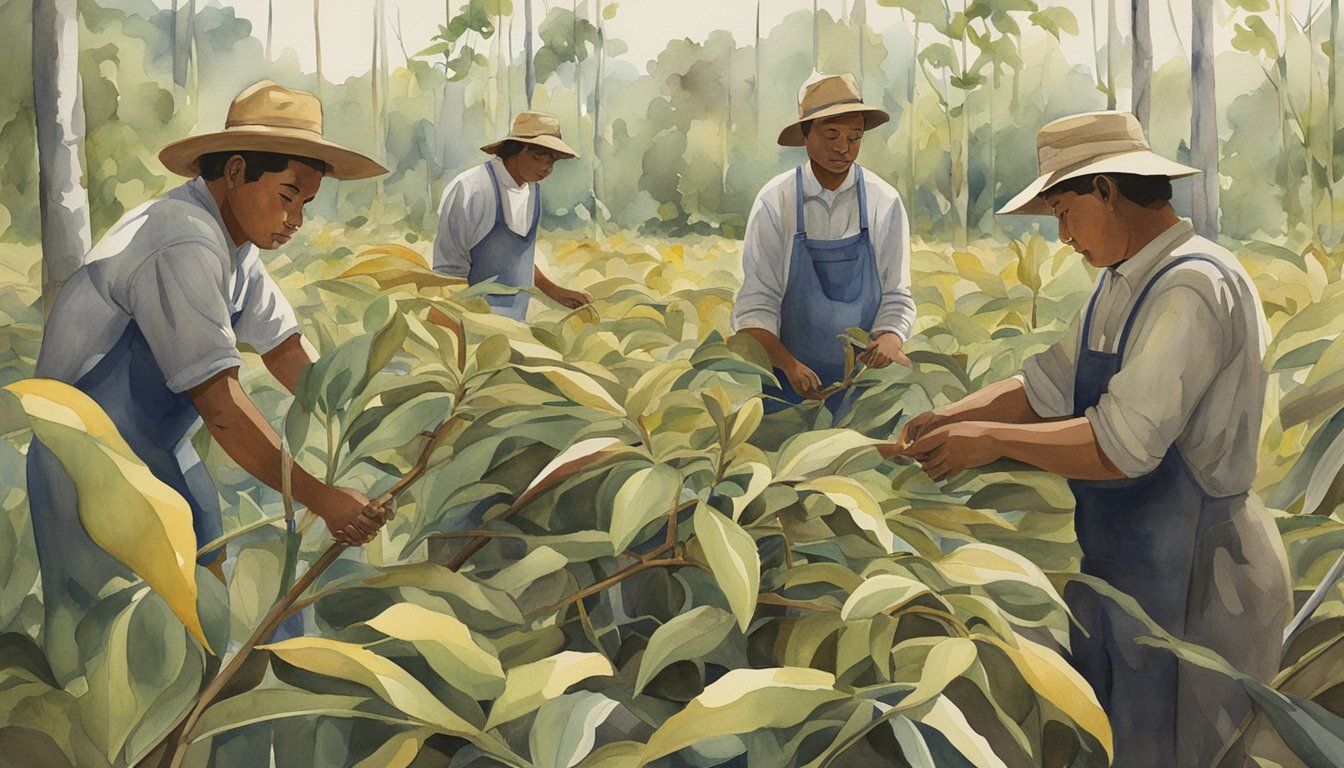Vanilla Flavoring Origins
When it comes to vanilla flavoring, there are some surprising natural sources and synthetic creations that have been developed over the years.
The Role of Beaver Castoreum
Beaver castoreum is a sticky substance secreted by beavers from their castor sacs, which are located near the base of their tails. Historically, it has been used as a natural flavoring in foods, most notably to create a vanilla taste. This use of castoreum is less common today, primarily due to the difficulty of harvesting it and the growth of synthetic alternatives. Castoreum is considered by the FDA to be “generally recognized as safe” for consumption. However, in practice, it’s used more often in perfumes than in the food people find at the grocery store.
Synthetic Alternatives
The demand for vanilla flavoring in products often surpasses the supply of natural vanilla extract, leading to the creation of synthetic alternatives. Chemists have developed a compound called vanillin, which is the primary component of vanilla bean extract. This synthetic version can be created in a lab, and it provides a consistent and readily available source of vanilla flavor. Most of the vanilla flavoring found in stores today is these artificial vanilla flavorings, not extracted from vanilla beans but made through chemical synthesis. These developments have been critical in food science, allowing flavor chemists to create imitation vanilla that’s more affordable and accessible than the natural extract.
Culinary Uses of Vanilla

Vanilla, with its sweet scent and rich flavor, is a coveted ingredient in culinary arts. It’s not just a staple in ice cream and desserts; its versatility extends to an array of food and beverages, enhancing them with its natural flavoring.
Ice Cream and Desserts
In the realm of desserts, vanilla stands tall as a fundamental ingredient. It’s the heart and soul of vanilla ice cream, providing that classic taste that’s both comforting and indulgent. More than a solo act, vanilla complements other flavors like chocolate, strawberry, and raspberry, often serving as a base in ice cream that other swirls and bits get mixed into. From creamy puddings to chewy candies, vanilla’s presence elevates the sweet essence of desserts.
- Vanilla pudding: an enduring favorite, smooth with a delicate balance of sweetness.
- Candies: think of vanilla as the quiet maestro orchestrating the symphony of flavors in numerous candy varieties.
Beyond these, its role in baking cannot be overstated. Often used in custards and creams, it infuses a warm, complex sweetness into every dessert it graces.
Beverages and Baked Goods
In baked goods, vanilla’s application is boundless, serving as a backbone flavor for cakes, cookies, and pastries. It’s the essence that often greets one’s nose upon entering a bakery. In terms of beverages, vanilla finds its way into various concoctions – from soothing vanilla-flavored teas to rich, frothy vanilla lattes.
- Vanilla in cakes: acts as a silent hero, bringing out the depth in other ingredients.
- Vanilla lattes: a popular choice for those seeking a hint of aromatic sweetness in their coffee.
Moreover, vanilla is an important food additive used by food companies to infuse a touch of sweetness into their products without the added calories. Vanilla’s influence in the culinary world is significant, making it a beloved flavoring agent by chefs and food enthusiasts alike.
Social and Economic Aspects

The use of castoreum in vanilla flavorings has piqued the interest of both consumers and industry experts, revealing a blend of fascination and practical economics.
Consumer Perceptions
Many consumers are surprised to learn that castoreum, a secretion from the castor sacs of beavers, has traditionally been used to enhance vanilla flavor in foods. That’s right, the same beavers that are known for their impressive dam-building skills also carry this rare ingredient that has appeared in recipes and Fenaroli’s Handbook of Flavor Ingredients. Awareness has spread through social media and ingredient lists, leading some to double-check labels more closely. Despite its FDA status as “generally regarded as safe” (GRAS), the rarity and expense of castoreum, along with growing preference for vegan or kosher options, has significantly influenced buyer choices and prompted discussions about food sourcing transparency.
Flavor Industry Insights
The procurement and application of castoreum by flavor chemists within the flavor and perfume industries offer a glimpse into the extensive laboratory training required for such a designation. The scent derived from castoreum is not only used in select food items but also in high-end perfumes, adding a layer of complexity and exclusivity to certain luxury bottles. Economically speaking, castoreum is not commonly used today due to its cost and limited supply, which in turn affects the pricing of the final product. Despite this, the safety assessment of castoreum extracts indicates its continued approval as a flavoring agent, suggesting that for special applications, its unique properties are still in demand.

